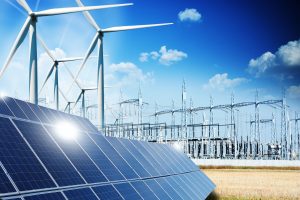During a recent debate between Indonesian vice presidential candidates, the term “greenflation” made an appearance. The meaning was deliberately kept vague and it was used in this instance as a gotcha question by one debater to try and trip up his opponent. But the concept itself, which is about the role of prices in clean energy transitions, is important and deserves some deeper attention.
Basically, what “greenflation” refers to is that in the short term there will be substantial costs incurred as economies transition from fossil fuels to clean energy alternatives like solar power, electric vehicles, etc. There will be massive investments required in new grid infrastructure, in building renewable generating capacity, in battery manufacturing, in research and development. Infrastructure and supply chains that have supported the production and consumption of fossil fuels for decades will need to be restructured, and that is going to cost a lot of money.
Not only is investment in clean energy going to be costly, but fossil fuels are also going to become more expensive as coal, oil, and natural gas become scarcer and supply chains more precarious. We saw this in the immediate post-pandemic period, when the revival of economic activity sent demand for energy surging way beyond what could be immediately supplied. Consequently the price of coal, natural gas, and oil skyrocketed, as did many people’s energy bills.
Like it or not, making the switch to clean energy is going to be expensive. A key question at the heart of this discourse is who should pay? If you believe in the power of markets, you would likely say consumers should pay for a lot of it. Many people believe that prices set by markets are the best and most efficient way to organize the production and distribution of energy. And in order to make the switch to clean energy, it is actually a good thing for prices to rise in the short term.
Higher energy prices for consumers do two things. One, they change consumer behavior. If gasoline becomes more expensive, consumers will start switching to EVs. If the price of coal rises and electricity produced by coal-fired power plants becomes more expensive, consumers will demand cheaper alternatives like solar (producers will also look to switch, in order to save on generating costs). Rising fossil fuel prices will be painful in the short term, but in a competitive market environment they are a blunt way of accelerating the transition to cheaper and more sustainable alternatives.
The second reason consumers might be expected to pay higher prices in the short term is to provide a sufficiently attractive incentive for developers to build more clean energy. Investors don’t build solar farms because they love the environment (although their press releases might claim that’s the reason). They do it because they expect it to be profitable. And in a market-based economy, profit usually comes from consumers through higher prices.
Theoretically, over the long term, an energy system powered by renewables will see prices fall because generating costs are low. But the initial cost of building new capacity, plus a return on investment, needs to be priced in somewhere along the line. In a system that requires lots of investment right now, like Indonesia’s, we might expect these costs to be substantial.
And that, in a nutshell, is what the term greenflation refers to. The reason this is sort of an irrelevant gotcha question in Indonesia is because everyone – the candidates, the current president, past presidents, civil servants – already agrees on how this should be handled: The cost of the clean energy transition should not fall primarily on consumers, and it is the state’s job to insulate them from such cost burdens.
There are many ways the state can intervene to protect consumers from price increases, including subsidies, directing development of renewable energy through state-owned companies, or forcing private companies to take a haircut on their margins. Indonesia also has access to large domestic coal reserves, so they can keep energy prices low even if the market price of coal rises. That is not good for clean energy, but it’s good for Indonesian consumers and that is a very high priority when the government makes policy.
The debate didn’t really get into any of this. But by bringing up this concept it did scratch the surface of a much deeper and more consequential conversation about the role prices will play in the clean energy transition. And in Indonesia, even dueling vice presidential candidates would probably agree that hitting consumers with higher prices, even in service of a noble goal like cleaner energy, will be a difficult pill to swallow.

































